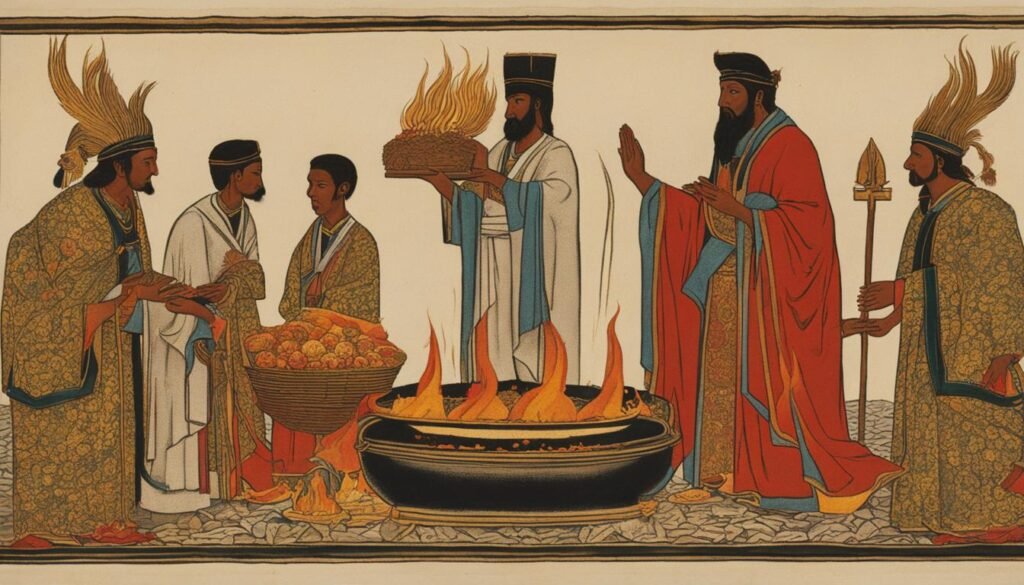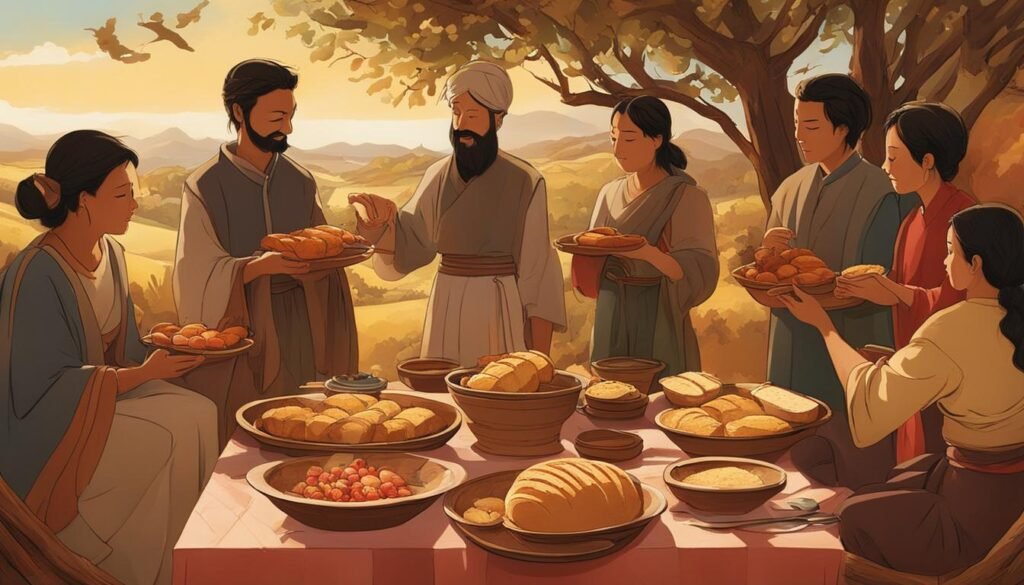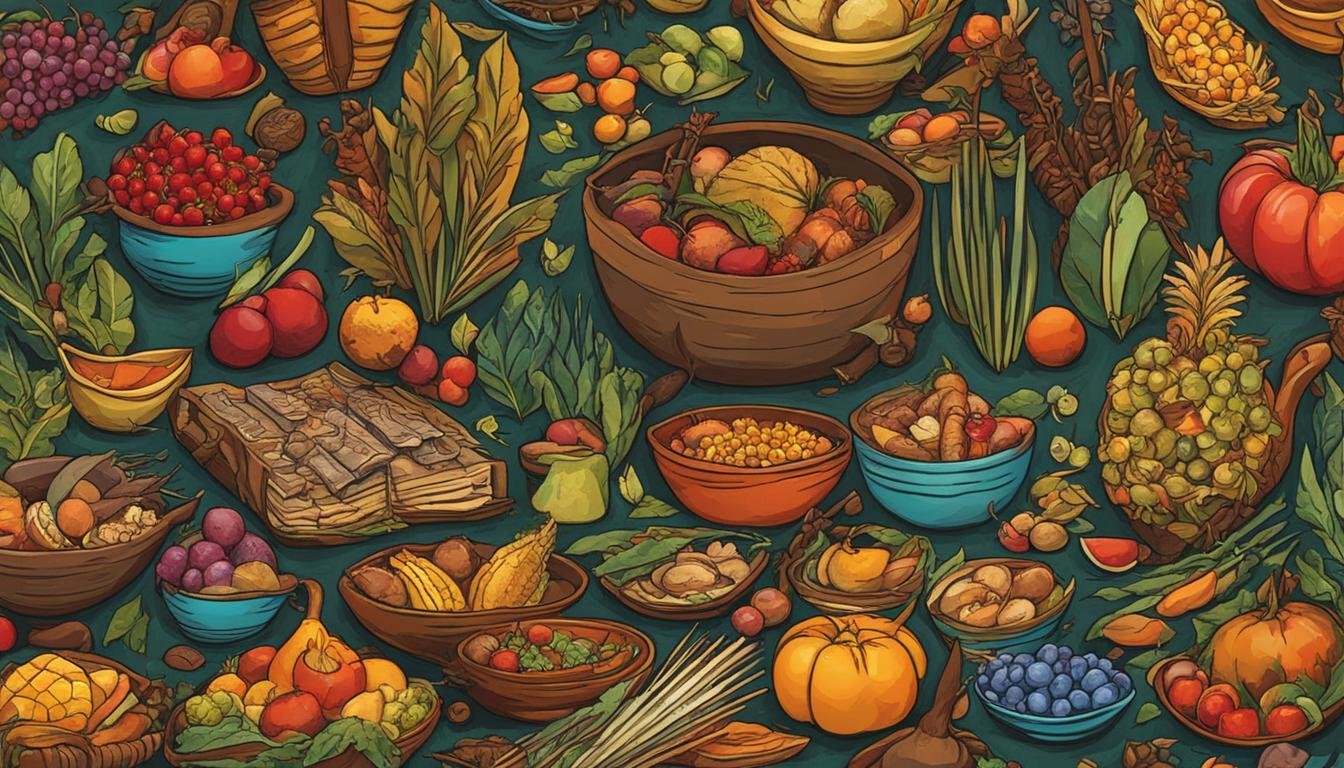In the Bible, there are five main types of offerings or sacrifices: burnt offerings, grain offerings, peace offerings, sin offerings, and trespass offerings. These offerings played a significant role in the worship and religious practices of the Old Testament. They represented acts of devotion, atonement, gratitude, fellowship, and purification.
Burnt offerings were voluntary acts of worship and atonement for unintentional sin. Grain offerings expressed gratitude and thanksgiving for God’s provision and goodwill. Peace offerings fostered fellowship and shared meals, symbolizing thanksgiving and celebration. Sin offerings were mandatory for atonement and cleansing from sins, offering restoration and reconciliation with God. Trespass offerings served as reparations for unintentional sins and purification from defiling sins or conditions.
Understanding the different types of offerings in the Bible provides insight into the religious practices and beliefs of the time. These offerings were not simply rituals but held deep spiritual significance and were a means for the people to connect with God.
Key Takeaways:
- The Bible contains five main types of offerings: burnt offerings, grain offerings, peace offerings, sin offerings, and trespass offerings.
- Burnt offerings were voluntary acts of worship and atonement for unintentional sins.
- Grain offerings expressed gratitude and thanksgiving for God’s provision and goodwill.
- Peace offerings fostered fellowship and shared meals, symbolizing thanksgiving and celebration.
- Sin offerings were mandatory for atonement and cleansing from sins, offering restoration and reconciliation with God.
Understanding the Burnt Offering and Grain Offering in the Bible
The burnt offering and grain offering are two distinct types of offerings mentioned in the Bible. Each holds its own significance and purpose within the context of worship and devotion to God.
The burnt offering, also known as the “olah” offering, was a voluntary act of worship and atonement. It demonstrated an individual’s devotion and commitment to God, expressing the desire to draw near to Him and seek reconciliation for unintentional sins. Animals such as bulls, lambs, or birds were sacrificed, and their meat and bones were completely burnt on the altar as an offering to God. This act of complete destruction symbolized the surrender of oneself to God, leaving nothing behind. The hide of the animal was given to the Levites as their portion, establishing a practical provision for the priests.
The grain offering, on the other hand, was a voluntary act of gratitude and thanksgiving to God for His provision and goodwill. It represented the acknowledgment that everything, including the grain used for making bread or cakes, ultimately came from God. Along with the grain offering, a drink offering of wine was also presented. The priests, who served as intermediaries between God and the people, received a portion of the grain offering as sustenance. This act of offering grain and wine symbolized the desire to honor and express gratitude to God for His blessings.

The Contrast Between the Burnt Offering and Grain Offering
The burnt offering and grain offering differ in their purpose and symbolism. While the burnt offering highlighted the need for atonement and the surrender of oneself to God, the grain offering emphasized gratitude, thanksgiving, and the recognition of God’s provision. The burnt offering involved the sacrifice of animals, while the grain offering involved offering bread or cakes made from grain. Additionally, the burnt offering was a mandatory act for certain situations, while the grain offering was voluntary, expressing one’s heartfelt devotion and appreciation to God.
Overall, these offerings played an essential role in the religious practices of the ancient Israelites, providing them with a tangible way to express their devotion, seek forgiveness, and express gratitude. They were an integral part of their worship and connection with God.
Exploring the Peace Offering, Sin Offering, and Trespass Offering
In addition to burnt offerings and grain offerings, the Bible also details the types and purposes of peace offerings, sin offerings, and trespass offerings. These offerings were significant in fostering fellowship, providing atonement, and enabling purification.
Peace Offering
The peace offering was an act of thanksgiving and fellowship. It involved the offering of an unblemished animal, which could be a bull, a lamb, or a goat, along with various grains or breads. Unlike the burnt offering where the entire animal was consumed by fire, in the peace offering, the meat was cooked and shared in a communal meal. This shared meal fostered fellowship and symbolized the unity between the offeror, the priests, and God. Portions of the offering were given to the priests and to God, while the rest was enjoyed by the offeror and their guests.
Sin Offering
The sin offering, as the name suggests, was a mandatory offering for atonement and purification from sins. Different animals were used depending on the individual’s financial situation, with offerings ranging from a bull for high-ranking leaders to a pair of turtledoves or pigeons for those of more modest means. The fat portions, kidneys, and liver were burned on the altar, while the remainder of the animal was typically consumed by the priests. This offering served as a means of cleansing and reconciliation, allowing individuals to be restored to a state of purity before God.
Trespass Offering
The trespass offering was also mandatory and was meant to address unintentional sins or defiling conditions. This offering involved the sacrifice of an unblemished ram and, like the sin offering, certain portions of the animal were burned on the altar. However, unlike the sin offering, the remainder of the ram could be eaten by the priests. The trespass offering served as a means of reparations for unintentional sins and purification from defilement, allowing individuals to be brought back into right standing with God.
| Offering | Animal | Purpose |
|---|---|---|
| Peace Offering | Bull, lamb, or goat | Thanksgiving, fellowship, and shared meal |
| Sin Offering | Bull, goat, turtledoves, or pigeons | Atonement and purification |
| Trespass Offering | Ram | Reparations for unintentional sins and purification from defilement |
These offerings played a significant role in the religious practices of the Israelites, providing avenues for worship, forgiveness, and purification. They highlighted the importance of gratitude, fellowship, and atonement in the relationship between humanity and God. However, these offerings were ultimately temporary and incomplete solutions for the forgiveness of sins. They pointed forward to the ultimate sacrifice of Jesus Christ, who became the perfect and final offering for our sins, providing salvation and the assurance of forgiveness for all who believe in him.

Conclusion: The Significance of Offerings in the Bible
The offerings in the Old Testament held immense significance in the realm of worship and devotion. They symbolized the deep desire of the people to connect with God and seek atonement for their sins. However, it was through the ultimate sacrifice of Jesus Christ that the true salvation and forgiveness were realized.
Throughout the Old Testament, offerings served as a tangible expression of gratitude and fellowship, allowing individuals to acknowledge God’s provision and goodness in their lives. These acts of worship, ranging from voluntary burnt and grain offerings to mandatory sin and trespass offerings, provided a framework for purification and reparations, facilitating a deeper spiritual connection with the divine.
Nevertheless, the sacrificial system in the Old Testament was but a foreshadowing of the redemption that would come through Jesus Christ. By offering himself as the ultimate sacrifice, Jesus became the bridge between humanity and God, offering salvation to all who believe. It is through faith in Jesus that individuals now find complete restoration of their broken relationship with God, receiving forgiveness, and the assurance of eternal life.
The offerings in the Bible, though culturally significant in the Old Testament, find their fulfillment in Jesus Christ. They point to the ultimate sacrifice and serve as a reminder of the redemption we have through him. The Old Testament sacrificial system was a divine precursor to the grace and mercy that we now experience through faith in the perfect sacrifice of Jesus Christ.
FAQ
How many types of offerings are there in the Bible?
There are five main types of offerings in the Bible. They include burnt offerings, grain offerings, peace offerings, sin offerings, and trespass offerings.
What is a burnt offering in the Bible?
The burnt offering was a voluntary act of worship and atonement in the Bible. It expressed devotion and commitment to God. Various animals were sacrificed, and their meat and bones were completely burnt. The hide was given to the Levites.
What is a grain offering in the Bible?
The grain offering in the Bible was a voluntary act of gratitude and thanksgiving for God’s provision and goodwill. Different types of bread or cakes made from grain were offered, along with a drink offering of wine. The priests received a portion of the grain offering.
What is a peace offering in the Bible?
The peace offering in the Bible was an act of thanksgiving and fellowship. It involved offering an unblemished animal along with various grains or breads. The participants shared a meal together in fellowship, while portions were given to the priests and to God.
What is a sin offering in the Bible?
The sin offering in the Bible was a mandatory act of atonement and cleansing. It included offering different animals depending on the individual’s financial situation. The sin offering was a requirement to address sins.
What is a trespass offering in the Bible?
The trespass offering in the Bible was a mandatory act to serve as reparations for unintentional sins and purification. The fat portions, kidneys, and liver were offered to God, while the remainder was eaten in the tabernacle.
What is the significance of offerings in the Bible?
The offerings in the Bible served as a means of worship, atonement, gratitude, fellowship, and purification. They were an expression of devotion and a recognition of God’s provision and goodwill. However, these offerings were ultimately inadequate to fully restore the broken relationship between humanity and God. They foreshadowed the redemption we have in Jesus Christ, who became the ultimate and perfect offering for our sins. Through faith in Jesus, we have salvation and the assurance of forgiveness.

I’m Benjamin, a passionate spiritual seeker and creator of Verses and Prayers. Alongside my girlfriend Emma and our pet lizard Mulle, I cherish family life, enjoy exploring new places, and am deeply involved in my church community. My love for reading and singing biblical verses inspires every aspect of my journey.

